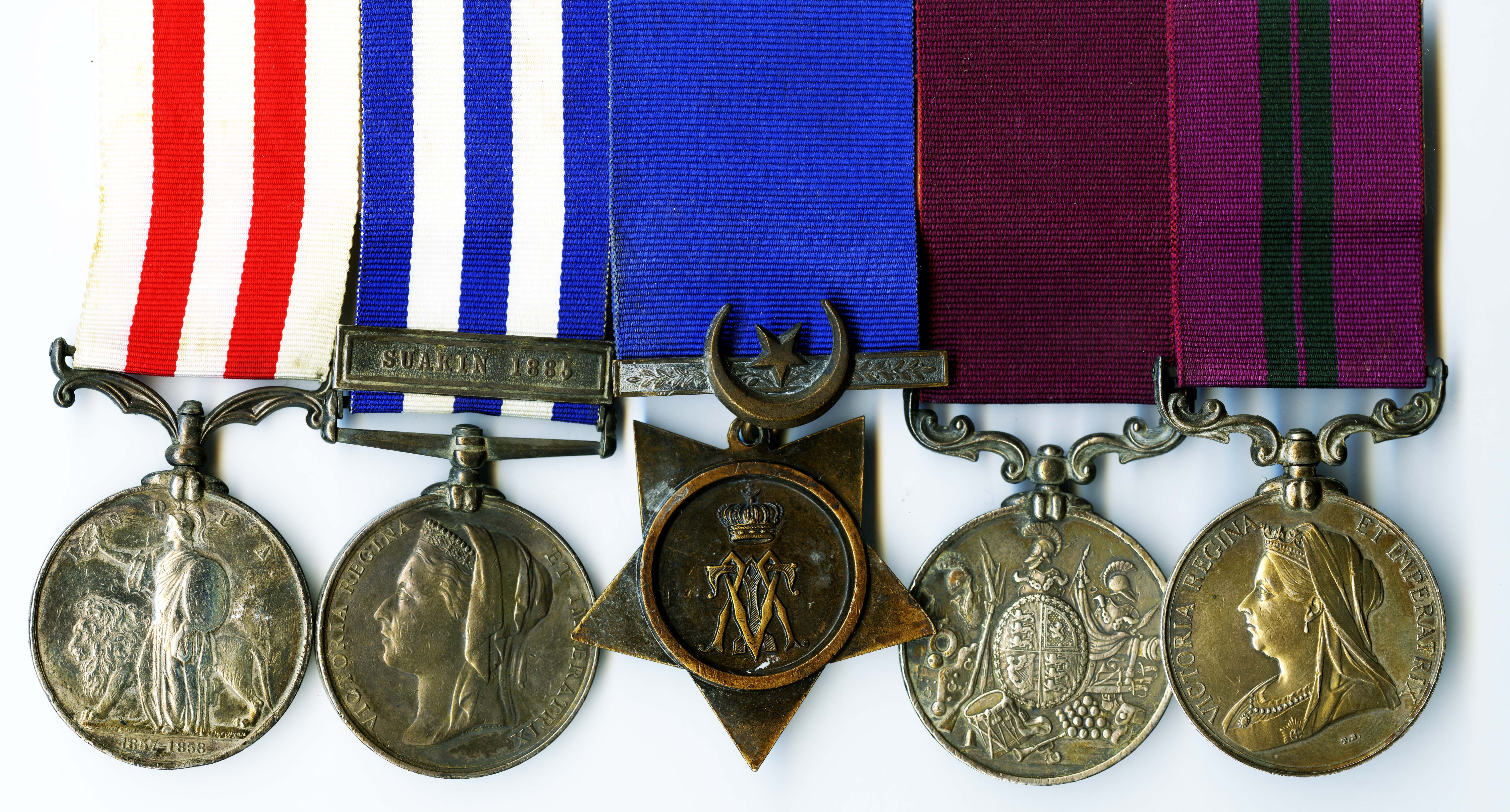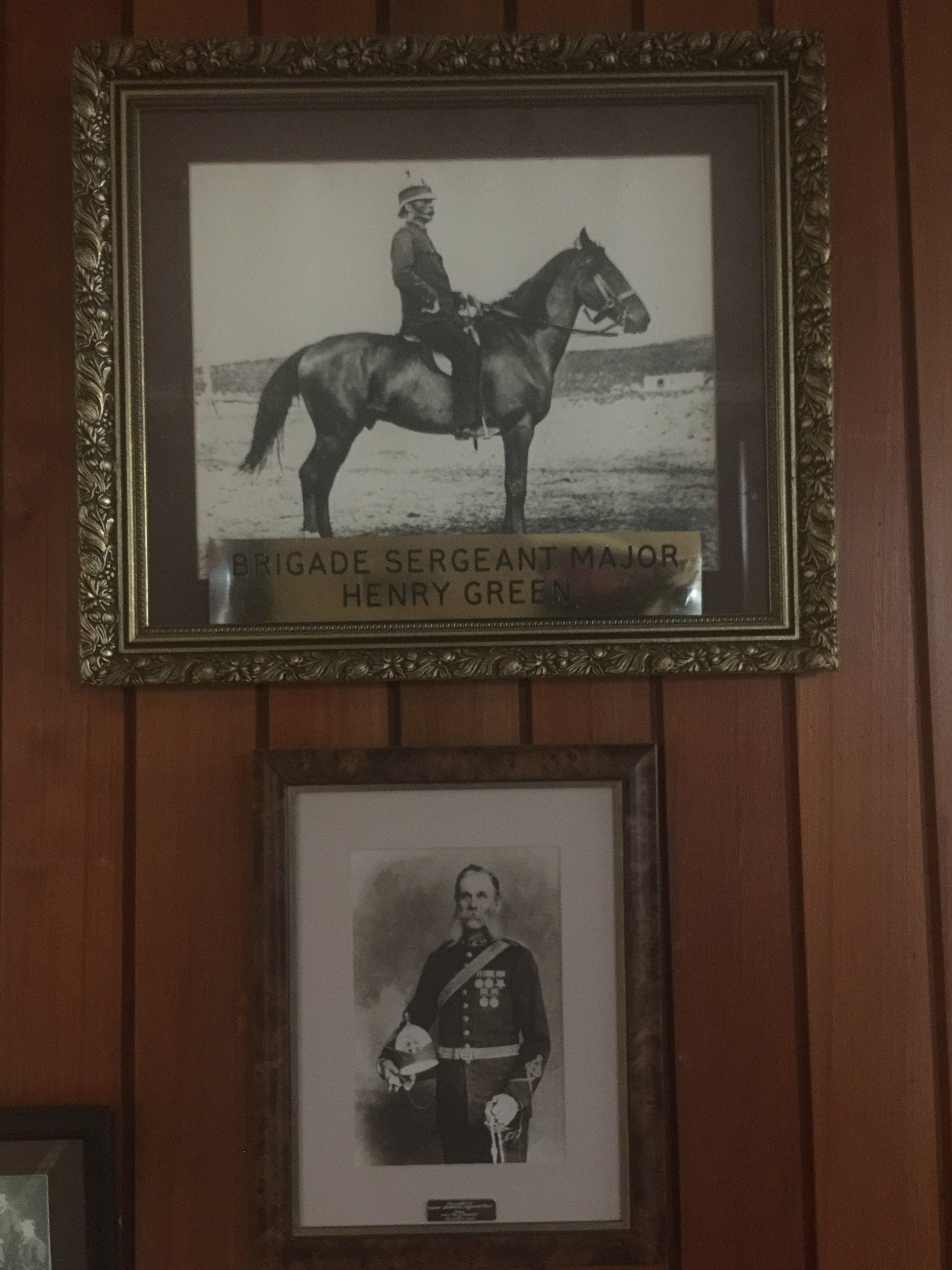This month we are featuring the medals of Sergeant Major Henry Green.

Military Medals
- Indian Mutiny Medal (1857-59)
- Egypt Medal with clasp ‘Suakin 1885’
- Khedive’s Star (1882-1891)
- Army Long Service and Good Conduct Medal
- Colonial Meritorious Service Medal
Early Life
Born at Seaford, East Sussex on 24th January 1830, Henry was the son of John Green and his wife Eleanor. A labourer by occupation at the age of 18 years, Henry Green enlisted in the British Army on 1st December 1847 at Eastbourne, East Sussex. He enlisted as a gunner in the Royal Regiment of Artillery.
Military Career (British Army)
After six years as a gunner, Henry Green was promoted on 21 January 1854 to the rank of bombardier. His next promotion was to corporal on 9th May 1855 and then to sergeant on 26 January 1856.
From September 1857 to February 1860 Henry Green served at Bombay, now Mumbai, in western India. Part of this period included the Indian rebellion against domination of large parts of India by the British East India Company.
The United Kingdom Census for 1861 shows that Henry Green, a Sergeant in the Coast Guard Brigade [Coast Brigade, Royal Artillery] and then aged 31, resided at Cardiff, Glamorganshire in Wales with his wife, Susan Green, born C1832 at Marylebone, London.
Henry Green was discharged from the British Army on 15th December 1868 at Swansea on the south-west coast of Wales. Swansea was also recorded as his intended place of residence after discharge. Later, he and his family migrated to New South Wales.
Military Career (Australia)
On 1 August 1871, the Governor of New South Wales proclaimed the raising and embodying of a Permanent Military Forces' battery of artillery to be known as the New South Wales Artillery and two companies of infantry to be known as the New South Wales Infantry.
The first soldier to enlist in the New South Wales Artillery was Henry Green who was appointed as Battery Sergeant Major with the rank of Staff Sergeant. He was the only senior member of the battery with previous experience as a gunner.
Initially located at Dawes Point, adjacent to where the south pylon of the Sydney Harbour Bridge now stands, the artillery battery later became known as 'A' Battery, New South Wales Artillery.
The first guns used by the battery were four brass 9-pounder smooth bore guns and two 24-pounder howitzers.
Although having a field artillery role, the main task of the New South Wales Artillery during its first three years was to instal heavy guns for the defence of Sydney Harbour.
In 1876, an additional battery was established to form an artillery brigade with Henry Green as the Brigade Sergeant Major. In 1877, a third battery was also established as part of the brigade.
On 3 March 1885, a contingent of two infantry battalions and a battery of artillery of the New South Wales Military Forces embarked at Sydney to join a British expeditionary force in the Sudan to fight rebel Sudanese forces.
The embarkation marked the first time an Australian colony would send a military force overseas. Warrant Officer Henry Green was among those who embarked. The contingent disembarked at the Red Sea port of Suakin in north-eastern Sudan on 29 March 1885. Although drilled for its intended role, the artillery battery did not engage the enemy and the whole British force was withdrawn from the Sudan in May 1885. The New South Wales contingent arrived back in Sydney on 19 June 1885.
Henry Green retired from the New South Wales Artillery in November 1896 with the honorary rank of second lieutenant.
Later Life
In retirement, Henry Green resided in Mill Hill Road, Waverley (now Bondi Junction), just 3 km east of Victoria Barracks, Sydney. Henry Green passed away at his residence on 30 May 1918, aged 89 years.
The following year, on 7th November 1919, his wife Susan also passed away at the age of 89 years. Both are interred at Waverley Cemetery.
For more detail about Sergeant Major Green and his connection to Victoria Barracks Sydney visit the Army Museum of New South Wales web site.










